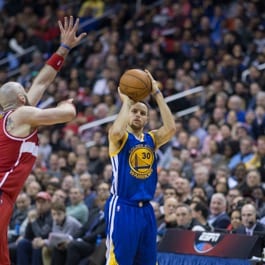
The Golden State Warriors were the epitome of teamwork during the 2014-2015 NBA season as their constant flow of innovative interactions led to their first championship since 1975. (Source: Wikimedia Commons, Credit: Keith Allison)
As fans watch the exciting yet seemingly random plays that take place during basketball games, they may not recognize the self-organization that occurs amongst both teams. It turns out that the cooperation of teammates during the course of the game results in innovative behaviors. A team of scientists recently proposed that these complex interactions bear a resemblance to evolutionary tactics as a means of survival.
After examining over 6,000 NBA games, Spanish researchers from the University of Las Palmas de Gran Canaria determined that basketball games consist of a restructuring process by opposing teams. Co-author of the study, Yves de Saá Guerra, explains, “Many researchers consider basketball to be a random sport, but the reality is actually much more complex, just as in natural systems (1).” At any point in the game, teams can undergo a self-organization process, as the players can individually offer solutions to combat a specific problem. Players make the decision to either pass, shoot, dribble or incorporate a variety of moves, thereby stimulating team creativity.
This process intensifies during the final minute of the game, especially during close games (with less than 6-point differential). In a natural environment with limited resources, species evolve with small adaptive changes that increase their odds for survival. Basketball teams must gain any advantage before the last minute, and from then on, any mistake can determine the game’s outcome.
A number of the most exciting NBA games are decided during the final 60 seconds. The process of self-organization, essentially teamwork and communication, plays a major role in each team’s success.
Similar to natural systems, teams that are most suited to adapt to various game situations have a greater chance of winning (2). In other words, rather than observing the “randomness” that takes place during a basketball game, one should appreciate each player’s contributive effort solely for the good of the team.
References:
- Martín González, J.M., de Saá Guerra, Y., García-Manso, J.M., & Arriaza, E. (2016). Design and flow in basketball. International Journal of Heat and Technology, 34 (Special Issue 1, S51-S58. doi:18280/ijht.34S1
- FECYT – Spanish Foundation for Science and Technology. (2016, March 30). Basketball games mimic nature. ScienceDaily. Retrieved April 8, 2016 from www.sciencedaily.com/releases/2016/03/160330123454.htm
Leave a Reply